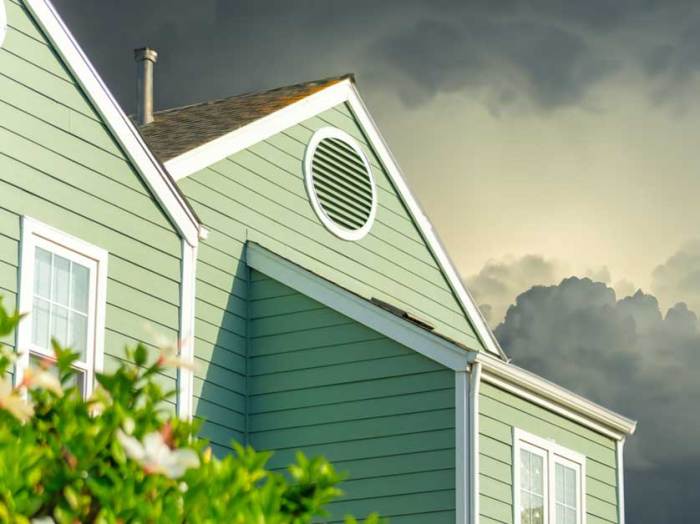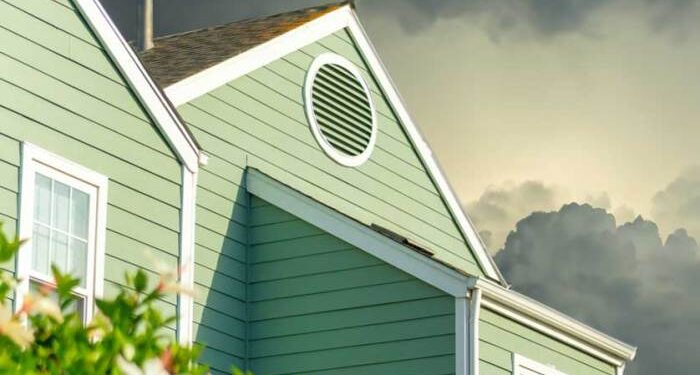Exploring the fascinating world of siding materials and their relationship with region and climate, this guide offers valuable insights and practical information for homeowners and professionals alike. From the impact of environmental factors to the influence of cultural preferences, this topic delves into the nuances of siding selection across different geographical locations.
Diving deeper into the nuances of siding materials, this guide sheds light on the diverse options available and how they interact with specific climates and regions.
How Siding Materials Vary by Region and Climate
When it comes to siding materials, different regions around the world often have their preferences based on the climate they experience. The choice of siding materials is heavily influenced by the weather conditions and temperature variations in each area.
Common Siding Materials Used in Different Regions
Various siding materials are commonly used in different regions depending on their availability and suitability to the climate. For example:
- Wood: Often used in temperate climates for its natural look and versatility.
- Vinyl: Popular in regions with high humidity or extreme temperature variations due to its durability and low maintenance.
- Brick: Common in areas with colder climates for its insulating properties and resistance to harsh weather.
How Climate Influences the Choice of Siding Materials
The climate plays a crucial role in determining the most suitable siding materials for a particular region. For instance, regions with heavy rainfall might opt for materials like vinyl or fiber cement that are resistant to moisture, while areas with strong winds may prefer brick or stone for added stability.
Comparing Durability of Siding Materials in Various Climates
The durability of siding materials varies depending on the climate they are exposed to. While wood siding may be prone to rot in humid regions, fiber cement can withstand moisture and high temperatures. Understanding the durability of each material is essential for choosing the right siding for a specific climate.
Impact of Temperature Variations on Siding Materials
Temperature fluctuations can affect the performance of siding materials differently. Materials like vinyl can expand and contract with temperature changes, making them suitable for regions with extreme weather conditions. On the other hand, metal siding may be more prone to corrosion in areas with high humidity and temperature variations.
Regional Considerations for Siding Materials
When choosing siding materials, it is essential to consider the specific climate and environmental conditions of the region where the building is located. Different regions require different types of siding materials to ensure durability and efficiency.
Siding Materials Suitable for Hot Climates
In hot climates, it is crucial to choose siding materials that can withstand high temperatures and intense sunlight without warping or fading. Some examples of siding materials suitable for hot climates include:
- Vinyl Siding: Vinyl siding is a popular choice for hot climates due to its durability, low maintenance, and ability to resist fading.
- Fiber Cement Siding: Fiber cement siding is a robust option that can withstand extreme temperatures and is resistant to moisture and insects.
- Stucco: Stucco is an excellent choice for hot climates as it can regulate temperature and provide insulation, keeping the interior of the building cool.
Best Siding Options for Cold and Snowy Regions
In cold and snowy regions, siding materials need to be able to withstand freezing temperatures, snow, and ice buildup. The best siding options for these regions include:
- Wood Siding: Wood siding provides natural insulation and can withstand cold temperatures. However, it requires regular maintenance to protect against moisture and rot.
- Fiber Cement Siding: Fiber cement siding is also suitable for cold climates as it is resistant to cracking, warping, and moisture damage.
- Metal Siding: Metal siding is another excellent option for cold regions due to its durability and ability to shed snow and ice easily.
Siding Materials that Work Well in Humid Environments
In humid environments, siding materials need to be able to withstand moisture and humidity without rotting or mold growth. Some siding materials that work well in humid environments include:
- Vinyl Siding: Vinyl siding is resistant to moisture and does not warp or rot, making it an ideal choice for humid regions.
- Fiber Cement Siding: Fiber cement siding is also suitable for humid environments as it is resistant to moisture and mold growth.
- Engineered Wood Siding: Engineered wood siding is designed to resist moisture and humidity, making it a durable option for humid regions.
Importance of Moisture Resistance in Coastal Regions
Coastal regions are prone to high humidity, saltwater exposure, and strong winds, making moisture resistance a crucial factor when selecting siding materials. Siding materials that work well in coastal regions include:
- Fiber Cement Siding: Fiber cement siding is highly durable and resistant to moisture, saltwater, and extreme weather conditions commonly found in coastal areas.
- Vinyl Siding: Vinyl siding is another good option for coastal regions due to its resistance to moisture and salt corrosion.
- Composite Siding: Composite siding is designed to mimic the look of wood but is more durable and resistant to moisture, making it an ideal choice for coastal homes.
Environmental Factors and Siding Selection
When choosing siding materials, it is crucial to consider the environmental factors of the region and how they can impact the performance and longevity of the siding. Factors such as wind, rain, sunlight, and temperature variations can greatly affect the durability, sustainability, energy efficiency, and maintenance needs of siding materials.
Impact of Environmental Factors on Siding Materials
- Wind: High winds can cause damage to certain siding materials, especially lightweight options like vinyl. In windy regions, more durable materials like fiber cement or brick may be preferred.
- Rain: Excessive moisture can lead to rot, mold, and mildew on siding materials. Choosing water-resistant options like metal or engineered wood can help prevent water damage in rainy climates.
- Sunlight: Prolonged exposure to sunlight can cause fading and deterioration of some siding materials. UV-resistant materials like fiber cement or metal can better withstand sun exposure.
- Temperature Variations: Extreme temperature changes can cause expansion and contraction in siding materials, leading to cracks or warping. Materials with good thermal stability, such as stone or brick, are better suited for regions with large temperature variations.
Sustainability of Siding Materials Based on Region
- Wood: While wood siding is biodegradable and renewable, it may not be sustainable in regions with high humidity or moisture levels due to the risk of rot and decay.
- Fiber Cement: Fiber cement siding is durable and low maintenance, making it a sustainable choice for regions with harsh weather conditions.
- Vinyl: Vinyl siding is not biodegradable and can release toxic chemicals when exposed to fire, making it less sustainable in regions prone to wildfires.
Energy Efficiency of Siding Materials in Relation to Climate
- Insulated Siding: Insulated siding materials can improve energy efficiency by reducing heat loss in cold climates and heat gain in hot climates, helping homeowners save on heating and cooling costs.
- Reflective Siding: Light-colored or reflective siding materials can help reduce heat absorption and lower cooling costs in hot climates with intense sunlight.
Geographic Location and Maintenance Needs of Siding Materials
- High Humidity Regions: In humid climates, siding materials prone to moisture damage, such as wood, may require more frequent maintenance like sealing or painting to prevent rot and mold growth.
- Coastal Areas: Siding materials in coastal regions are often exposed to saltwater, requiring materials like vinyl or fiber cement that are resistant to corrosion from salt exposure.
Cultural Influences on Siding Choices
In addition to regional and environmental factors, cultural influences play a significant role in determining the choice of siding materials for homes and buildings. Cultural preferences, traditions, and architectural styles all contribute to the selection of siding materials in different regions.Traditional siding choices often reflect the cultural heritage and history of a particular area.
For example, in coastal regions with a history of shipbuilding, homes may feature wooden siding to pay homage to the maritime past. In areas with strong agricultural roots, such as the Midwest, siding materials like corrugated metal may be popular due to their durability and practicality.Architectural style also plays a key role in siding material decisions.
For instance, homes inspired by Colonial or Victorian architecture may feature classic materials like clapboard or scalloped shingles to maintain the historical integrity of the design. In contrast, modern, minimalist homes may opt for sleek metal or composite siding to achieve a contemporary look.Historical factors, such as colonization or immigration patterns, can influence siding material trends across regions.
For example, areas settled by European immigrants may favor stucco or stone siding reminiscent of Old World architecture. On the other hand, regions with a history of industrialization may lean towards metal or concrete siding for a more urban aesthetic.
Examples of Traditional Siding Choices
- In New England, cedar shingles are a common siding choice due to their natural resistance to the harsh weather conditions.
- In the Southwest, adobe siding is popular for its thermal mass properties, helping to regulate indoor temperatures.
- In the Pacific Northwest, homes often feature cedar siding to blend in with the lush forest surroundings.
Ending Remarks

In conclusion, understanding how siding materials vary by region and climate is essential for making informed choices when it comes to home exteriors. By considering factors like durability, environmental impact, and cultural significance, homeowners can select the most suitable siding materials for their specific needs and preferences.
User Queries
What are some common siding materials used in hot climates?
In hot climates, materials like stucco, vinyl, and fiber cement are popular due to their ability to withstand high temperatures.
How does moisture resistance play a role in siding selection for coastal regions?
Moisture resistance is crucial in coastal regions to prevent damage from saltwater exposure and high humidity levels.
What are some traditional siding choices based on cultural influences?
In regions with Spanish influences, stucco and adobe are common siding choices, reflecting the cultural heritage of the area.












